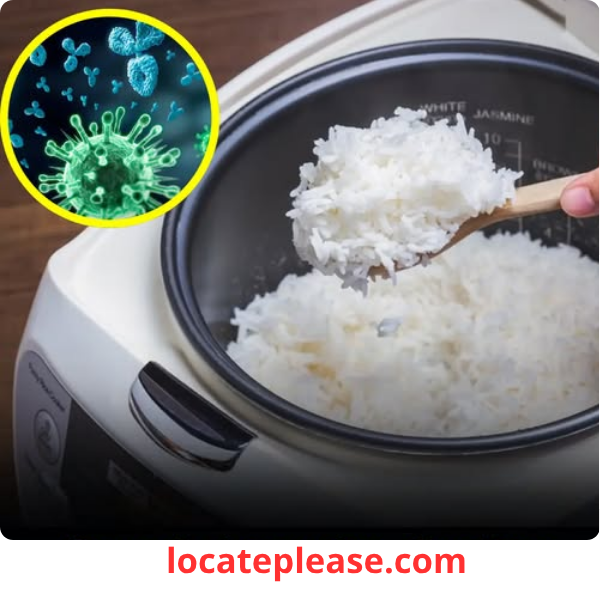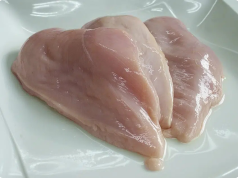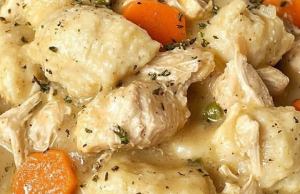It’s one of the most common leftovers in kitchens around the world: a container of cold rice sitting in the fridge, ready to be reheated for a quick meal.
But what many people don’t realize is that leftover rice can be a hidden danger — not because it’s inherently unsafe, but because of a tough, heat-resistant bacterium that loves to grow in it: Bacillus cereus.
This common bug is behind a lesser-known form of food poisoning — and your innocent-looking bowl of leftover rice could be its breeding ground.
Can You Eat Leftover Rice Safely? Yes — But Only If You Handle It Right
According to nutrition experts and food safety agencies like the NHS and Food Standards Agency (UK), leftover rice can be safe to eat — if stored and reheated properly.
The problem isn’t the rice itself — it’s how it’s cooled and stored after cooking.
When rice is left at room temperature for too long — even for just a few hours — Bacillus cereus spores (which naturally occur in raw rice) can germinate, multiply, and produce toxins.
And here’s the scary part:
👉 These toxins are heat-stable — meaning reheating won’t destroy them.
Consuming contaminated rice can lead to:
- Severe nausea
- Vomiting
- Diarrhea
- Abdominal cramps
Symptoms usually appear within 1–5 hours of eating and can last up to 24 hours. While most cases are mild, they can be severe — especially in young children, the elderly, or those with weakened immune systems.
The Danger Zone: How Leftover Rice Turns Toxic
Here’s how it happens:
- Raw rice contains Bacillus cereus spores — harmless when dry.
- When cooked, the spores survive (they’re heat-resistant).
- If the cooked rice is left at room temperature, the spores turn into active bacteria.
- The bacteria multiply rapidly and produce toxins.
- Even if you reheat the rice, the emetic (vomit-inducing) toxin remains.
This is why “leaving rice out overnight” is a food safety red flag — even if it looks and smells fine.
How to Store and Reheat Rice Safely
You don’t have to give up leftover rice — just follow these food-safe practices:
✅ 1. Cool It Quickly
- Don’t leave cooked rice at room temperature for more than 1 hour (2 hours max, but 1 is safer).
- Spread it in a shallow container to cool faster.
- Refrigerate within 1 hour of cooking.
✅ 2. Store It Properly
- Keep rice in an airtight container in the fridge.
- Eat within 24 hours — the longer it sits, the higher the risk.
- Never keep rice in the fridge for more than 1–2 days.
✅ 3. Reheat Thoroughly
- Reheat only once — never reheat rice multiple times.
- Heat it piping hot all the way through (at least 70°C / 158°F).
- Stir while reheating to ensure even heat distribution.
- Add a splash of water to prevent drying out.
❌ Never reheat rice in a slow cooker or crockpot — it doesn’t get hot enough, fast enough.
✅ 4. Know When to Toss It
If the rice:
- Smells sour or off
- Has a slimy texture
- Looks discolored
👉 Throw it out.
When in doubt, don’t eat it.
Best Practice: Cook Only What You Need
The safest way to avoid risks?
Minimize leftovers.
Cook just enough rice for one meal.
If you do have leftovers, eat them the next day — and only once.
Final Thoughts: Respect the Rice
Rice is a staple food for over half the world’s population — but it demands respect, not neglect.
That leftover container in your fridge isn’t just “food” — it’s a potential bacterial incubator if mishandled.
By cooling it quickly, storing it properly, and reheating it only once, you can enjoy your leftovers without risking your health.
So the next time you’re tempted to leave that pot of rice on the counter overnight…
Remember:
A few minutes of caution today can save you from hours of sickness tomorrow.
Cook smart. Cool fast. Reheat right. Your gut will thank you.










